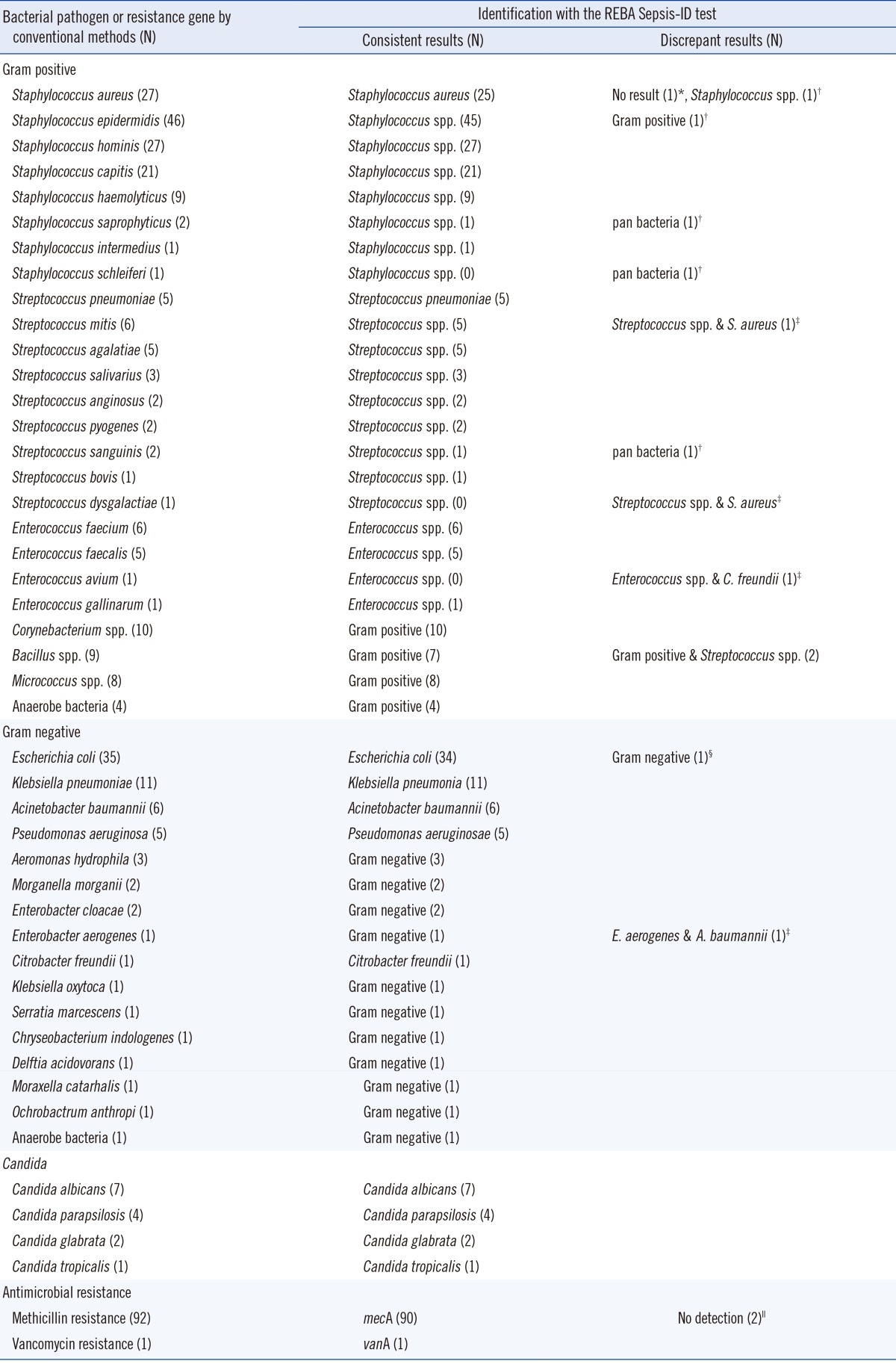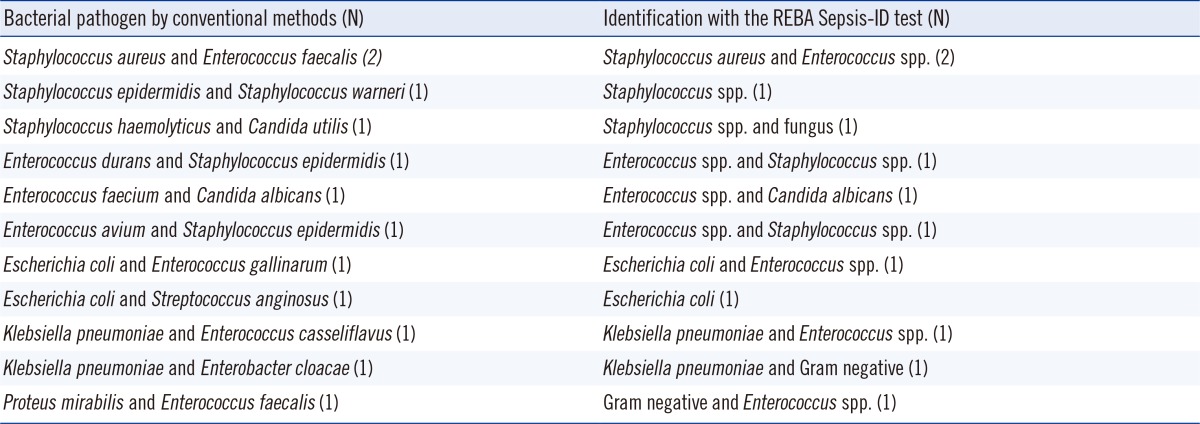1. Angus DC, Linde-Zwirble WT, Lidicker J, Clermont G, Carcillo J, Pinsky MR. Epidemiology of severe sepsis in the United States: analysis of incidence, outcome, and associated costs of care. Crit Care Med. 2001; 29:1303–1310. PMID:
11445675.

2. Barnato AE, Alexander SL, Linde-Zwirble WT, Angus DC. Racial variation in the incidence, care, and outcomes of severe sepsis: analysis of population, patient, and hospital characteristics. Am J Respir Crit Care Med. 2008; 177:279–284. PMID:
17975201.
3. Dombrovskiy VY, Martin AA, Sunderram J, Paz HL. Rapid increase in hospitalization and mortality rates for severe sepsis in the United States: a trend analysis from 1993 to 2003. Crit Care Med. 2007; 35:1244–1250. PMID:
17414736.

4. Esper AM, Moss M, Lewis CA, Nisbet R, Mannino DM, Martin GS. The role of infection and comorbidity: factors that influence disparities in sepsis. Crit Care Med. 2006; 34:2576–2582. PMID:
16915108.

5. Kung HC, Hoyert DL, Xu J, Murphy SL. Deaths: final data for 2005. Natl Vital Stat Rep. 2008; 56:1–120. PMID:
18512336.
6. Lever A, Mackenzie I. Sepsis: definition, epidemiology, and diagnosis. BMJ. 2007; 335:879–883. PMID:
17962288.

7. Weinstein MP, Towns ML, Quartey SM, Mirrett S, Reimer LG, Parmigiani G, et al. The clinical significance of positive blood cultures in the 1990s: a prospective comprehensive evaluation of the microbiology, epidemiology, and outcome of bacteremia and fungemia in adults. Clin Infect Dis. 1997; 24:584–602. PMID:
9145732.

8. Wilson ML. Outpatient blood cultures: progress and unanswered questions. Eur J Clin Microbiol Infect Dis. 2004; 23:879–880. PMID:
15599648.

9. Kumar A, Roberts D, Wood KE, Light B, Parrillo JE, Sharma S, et al. Duration of hypotension before initiation of effective antimicrobial therapy is the critical determinant of survival in human septic shock. Crit Care Med. 2006; 34:1589–1596. PMID:
16625125.

10. Forrest GN, Roghmann MC, Toombs LS, Johnson JK, Weekes E, Lincalis DP, et al. Peptide nucleic acid fluorescence in situ hybridization for hospital-acquired enterococcal bacteremia: delivering earlier effective antimicrobial therapy. Antimicrob Agents Chemother. 2008; 52:3558–3563. PMID:
18663022.
11. Wellinghausen N, Wirths B, Essig A, Wassill L. Evaluation of the Hyplex Blood Screen multiplex PCR-enzyme-linked immunosorbent assay system for direct identification of gram positive cocci and gram-negative bacilli from positive blood cultures. J Clin Microbiol. 2004; 42:3147–3152. PMID:
15243074.
12. Hansen WL, Beuving J, Bruggeman CA, Wolffs PF. Molecular probes for diagnosis of 260 clinically relevant bacterial infections in blood cultures. J Clin Microbiol. 2010; 48:4432–4438. PMID:
20962139.
13. Mühl H, KochemAJ , Disqué C, Sakka SG. Activity and DNA contamination of commercial polymerase chain reaction reagents for the universal 16S rDNA real-time polymerase chain reaction detection of bacterial pathogens in blood. Diagn Microbiol Infect Dis. 2010; 66:41–49. PMID:
18722072.

14. Lehmann LE, Hunfeld KP, Emrich T, Haberhausen G, Wissing H, Hoeft A, et al. A multiplex real-time PCR assay for rapid detection ad differentiation of 25 bacterial and fungal pathogens from whole blood samples. Med Microbiol Immunol. 2008; 197:313–324. PMID:
18008085.
15. Choi Y, Wang HY, Lee G, Park SD, Jeon BY, Uh Y, et al. PCR-reverse blot hybridization assay for the screening and identification of pathogens in sepsis. J Clin Microbiol. 2013; 51:1451–1457. PMID:
23447637.
16. Seok Y, Choi JR, Kim J, Kim YK, Lee J, Song J, et al. Delta neutrophil index: a promising diagnostic and prognostic marker for sepsis. Shock. 2012; 37:242–246. PMID:
22258230.
17. Atlas RM. Handbook of microbiological media. 3rd ed. London: CRC Press;2004. p. 1390.
18. Reasoner DJ, BlannonJC , Geldreich EE. Rapid seven-hour fecal coliform test. Appl Environ Microbiol. 1979; 38:229–236. PMID:
42349.

19. Bertani G. Studies on lysogenesis. I. The mode of phase liberation by lysogenic
Escherichia coli. J Bacteriol. 1951; 62:293–300. PMID:
14888646.
20. Mallon PW, Millar BC, Moore JE, Murphy PG, McClurg RB, Chew EW, et al. Molecular identification of
Acinetobacter sp. In a patient with culture-nagative endocarditis. Clin Microbiol Infect. 2000; 6:277–278. PMID:
11168128.
21. Millar B, Moore J, Mallon P, Xu J, Crowe M, McClurg R, et al. Molecular diagnosis of infective endocarditis-a new Duke's criterion. Scand J Infect Dis. 2001; 33:673–680. PMID:
11669225.
22. Steindor M, Weizengger M, Harrison N, Hirschl AM, Schweickert B, Göbel UB, et al. Use of a commercial PCR-based line blot method for identification of bacterial pathogens and the
mecA and
van genes from BacT Alert blood culture bottles. J Clin Microbiol. 2012; 50:157–159. PMID:
22075585.
23. Jordan JA, Durso MB. Real-time polymerase chain reaction for detecting bacterial DNA directly from blood of neonates being evaluated for sepsis. J Mol Diagn. 2005; 7:575–581. PMID:
16258155.

24. Liu Y, Han JX, Huang HY, Zhu B. Development and evaluation of 16S rDNA microarray for detecting bacterial pathogens in cerebrospinal fluid. Exp Biol Med (Maywood). 2005; 230:587–591. PMID:
16118409.

25. Akane A, Matsubara K, Nakamura H, Takahashi S, Kimura K. Identification of the heme compound copurified with deoxyribonucleic acid (DNA) from bloodstains, a major inhibitor of polymerase chain reaction (PCR) amplification. J Forensic Sci. 1994; 39:362–372. PMID:
8195750.

26. Kreader CA. Relief of amplification inhibition in PCR with bovine serum albumin or T4 gene 32 protein. Appl Environ Microbiol. 1996; 62:1102–1106. PMID:
8975603.

27. Jung R, Lübcke C, Wagener C, Neumaier M. Reversal of RT-PCR inhibition observed in heparinized clinical specimens. Biotechniques. 1997; 23:24. 26. 28. PMID:
9232220.

28. Al-Soud WA, Jönsson LJ, Râdström P. Identification and characterization of immunoglobulin G in blood as a major inhibitor of diagnostic PCR. J Clin Microbiol. 2000; 38:345–350. PMID:
10618113.

29. Lam NY, Rainer TH, Chiu RW, Lo YM. EDTA is a better anticoagulant than heparin or citrate for delayed blood processing for plasma DNA analysis. Clin Chem. 2004; 50:256–257. PMID:
14709670.

30. Rantakokko-Jalava K, Jalava J. Optimal DNA isolation method for detection of bacteria in specimens by broad-range PCR. J Clin Microbiol. 2002; 40:4211–4217. PMID:
12409400.
31. Kawamura Y, Hou XG, Sultana F, Miura H, Ezaki T. Determination of 16S rRNA sequences of
Streptococcus mitis and
Streptococcus gordonii and phylogenetic relationships among members of the genus
Streptococcus. Int J Syst Bacteriol. 1995; 45:406–408. PMID:
7537076.
32. Buchan BW, Ginocchio CC, Manii R, Cavagnolo R, Pancholi P, Swyers L, et al. Multiplex identification of gram-positive bacteria and resistance determinants directly from positive blood culture broths: evaluation of an automated microarray-based nucleic acid test. PLoS Med. 2013; 10:e1001478. PMID:
23843749.

33. Higashide M, Kuroda M, Ohkawa S, Ohta T. Evaluation of a cefoxitin disk diffusion test for the detection of
mecA-positive methicillin resistant
Staphylococcus saprophyticus. Int J Antimicrob Agents. 2006; 27:500–504. PMID:
16697558.
34. Matsuda K, Iwaki KK, Garcia-Gomez J, Hoffman J, Inderlied CB, Mason WH, et al. Bacterial identification by 16SrRNA gene PCR-hybridization as a supplement to negative culture results. J Clin Microbiol. 2011; 49:2031–2034. PMID:
21430102.
35. Kocoglu ME, Bayram A, Balci I. Evaluation of negative results of BacT/Alert 3D automated blood culture system. J Microbiol. 2005; 43:257–259. PMID:
15995643.







 PDF
PDF ePub
ePub Citation
Citation Print
Print


 XML Download
XML Download